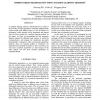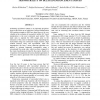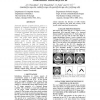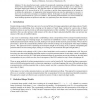ISBI
2006
IEEE
14 years 5 months ago
2006
IEEE
A machine learning method is introduced here to improve the accuracy of brain registration. Generally, different brain regions might need different types or sets of features for r...
ISBI
2006
IEEE
14 years 5 months ago
2006
IEEE
ISBI
2006
IEEE
14 years 5 months ago
2006
IEEE
This contribution describes a novel non-contact fluorescence optical tomography scheme which utilizes multiple area illumination patterns, to reduce the illposedness of the inver...
ISBI
2006
IEEE
14 years 5 months ago
2006
IEEE
Evaluating myocardial viability is an important prognostic factor in the follow-up of infarctions. Delayed Enhancement (DE) perfusion images in MRI have been shown to be very valu...
ISBI
2006
IEEE
14 years 5 months ago
2006
IEEE
Automated detection of stable fracture points in a sequence of Computed Tomography (CT) images is found to be a challenging task. In this paper, an innovative scheme for automatic...
ISBI
2006
IEEE
14 years 5 months ago
2006
IEEE
Quantitative analysis of cardiac motion is of great clinical interest in assessing ventricular function. Real-time 3-D (RT3D) ultrasound transducers provide valuable threedimensio...
ISBI
2006
IEEE
14 years 5 months ago
2006
IEEE
This paper presents a new framework for multiple object segmentation in medical images that respects the topological properties and anatomical relationships of structures as given...
ISBI
2006
IEEE
14 years 5 months ago
2006
IEEE
We describe the goals and proposed design for SimTK, part of the NIH-supported Simbios National Center for Biomedical Computing. SimTK (Simulation ToolKit) will enable biomedical ...
ISBI
2006
IEEE
14 years 5 months ago
2006
IEEE
We have described previously a method of automatically constructing statistical models of shape. The method treats model-building as an optimisation problem by re-parameterising ea...
ISBI
2006
IEEE
14 years 5 months ago
2006
IEEE
Near-infrared diffuse optical tomography has been demonstrated with video rate acquisition of the transmitted signal for 8 sources and 8 detectors. The system design is outlined w...




